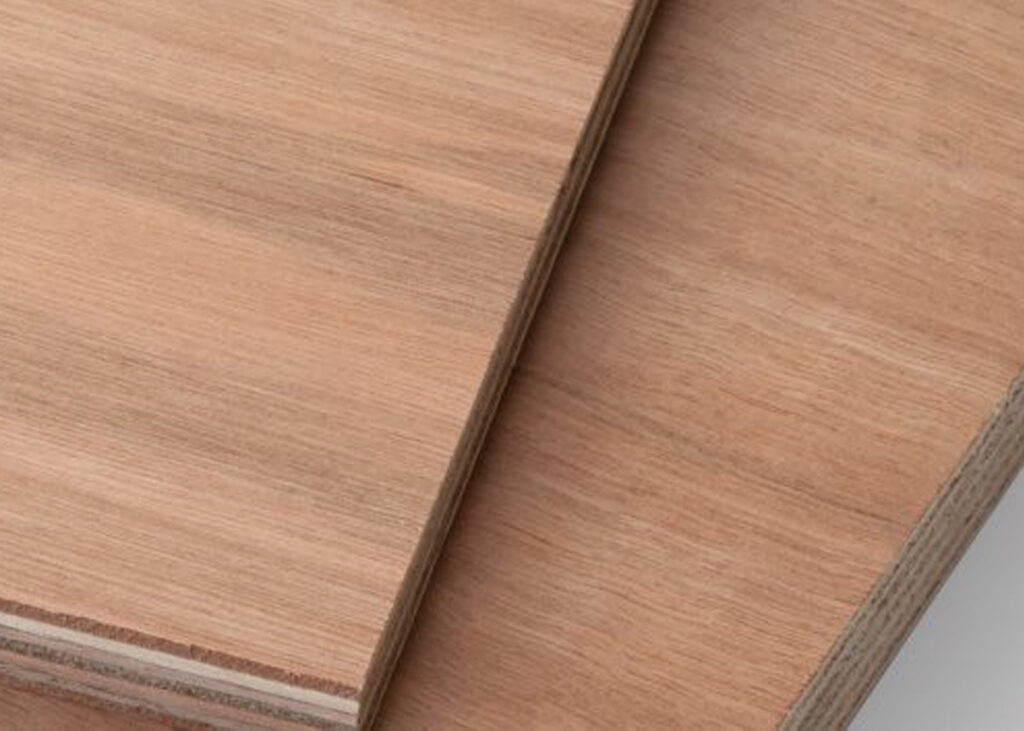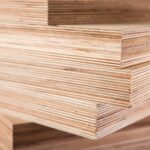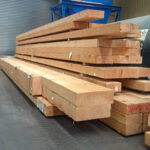Creating a solid foundation is crucial when it comes to any construction project. That’s why choosing the right plywood for formwork is so important. In this article, we will provide expert tips to help you make an informed decision.
Understanding the Basics of Plywood and Formwork
Before delving into the factors to consider when choosing plywood for formwork, it’s important to have a basic understanding of what plywood is and the role formwork plays in construction.
When it comes to plywood formwork, this versatile building material is not only known for its strength and stability but also for its eco-friendly properties. Plywood is often sourced from sustainably managed forests, making it a renewable and environmentally conscious choice for construction projects. Additionally, the layering of thin wood veneers in plywood allows for greater dimensional stability, reducing the risk of warping or cracking over time.
What is Plywood?
Plywood is a versatile building material made by stacking thin layers of wood veneers, or plies, bonded together with adhesive. This layering technique makes plywood stronger and more stable compared to solid wood.
Furthermore, plywood comes in various grades, each suited for different applications based on their strength and durability characteristics. From structural plywood used in heavy-duty construction to decorative plywood for aesthetic purposes, the versatility of plywood makes it a go-to choice for builders and designers alike.

The Role of Formwork in Construction
Formwork refers to the temporary structure used to contain and shape fresh concrete until it sets and hardens. It provides support and structure during the concrete pouring process, ensuring the desired shape and structure of the final product.
Formwork systems can vary in complexity, from traditional timber formwork to modern modular formwork made of aluminum or steel. The choice of formwork material depends on factors such as project requirements, budget constraints, and the desired finish of the concrete surface. Additionally, advancements in formwork technology have led to the development of reusable formwork systems, promoting sustainability and cost-effectiveness in construction practices.
Factors to Consider When Choosing Plywood for Formwork
When selecting plywood for formwork, there are several key factors to take into consideration. These include plywood thickness and size, grade and quality, as well as the environmental conditions and durability of the plywood.
Ensuring that you have the right plywood for your formwork is crucial to the success and safety of your construction project. Plywood thickness and size play a significant role in determining the structural integrity of the formwork. Thicker plywood is needed for heavier loads and larger spans, while the size of the plywood sheets should be compatible with the spacing of the supports to prevent sagging or buckling.
Read more at: Comparing F14 vs. F17 Plywood: Which is Right for You
Plywood Thickness and Size
The thickness and size of plywood required for formwork depends on several factors such as the load it will bear, the span between supports, and the spacing of the supports. It’s crucial to consult engineering specifications and codes to determine the appropriate thickness and size for your specific project.
Moreover, the type of formwork being used can also influence the plywood thickness and size requirements. For instance, curved or intricate formwork may necessitate thinner and more flexible plywood to achieve the desired shape without compromising strength.
Plywood Grade and Quality
The grade and quality of plywood are important considerations for formwork. Different grades have varying levels of strength and durability. Be sure to choose plywood that meets the requirements of your project and complies with relevant standards and regulations.
Higher grade plywood, such as A or B, is typically recommended for formwork due to its superior strength and resistance to warping or delamination. Investing in high-quality plywood may incur a higher initial cost but can result in long-term savings by reducing the need for frequent replacements or repairs.
Environmental Conditions and Durability
Consider the environmental conditions the plywood will be exposed to during construction. Factors such as moisture, temperature, and exposure to chemicals or sunlight can affect the durability of the plywood. Select plywood that is suitable for the specific environmental conditions of your project.
Additionally, taking preventive measures such as applying sealants or coatings can help enhance the durability of the plywood and prolong its lifespan. Regular inspections and maintenance of the formwork can also identify any signs of damage or deterioration early on, allowing for timely repairs or replacements to maintain the structural integrity of the formwork. Learn more about maintenance at https://www.dau.edu/acquipedia-article/maintenance-concept
Different Types of Plywood for Formwork
Plywood comes in various types, each with its own characteristics and strengths. Understanding the different types can help you choose the most suitable option for your formwork needs.
Softwood Plywood
Softwood plywood is commonly used for formwork due to its strength, durability, and cost-effectiveness. It is made from softwood species such as pine, spruce, or fir. Softwood plywood is suitable for most general-purpose formwork applications.
Softwood plywood is known for its versatility and ease of use. It is relatively lightweight, making it easier to handle on construction sites. The natural grain patterns of softwood plywood can also add a decorative touch to formwork structures, especially when used for projects where aesthetics are important.
Hardwood Plywood
Hardwood plywood is made from hardwood species such as oak, birch, or maple. It offers greater strength and durability compared to softwood plywood. Hardwood plywood is recommended for formwork projects that require more demanding structural requirements.
Hardwood plywood is prized for its exceptional strength and resistance to wear and tear. It is often chosen for formwork applications where heavy loads or frequent use are expected. Additionally, the smooth surface of hardwood plywood allows for easy finishing, making it ideal for projects where a polished appearance is desired.
Tropical Plywood
Tropical plywood is specifically suited for formwork in high-humidity and tropical environments. It is made from tropical hardwood species that have inherent resistance to moisture and fungal attacks. Tropical plywood is highly durable and suitable for long-term formwork projects.
Tropical plywood’s unique composition makes it an excellent choice for formwork in regions with challenging environmental conditions. Its resistance to moisture-related issues such as warping or delamination ensures that structures built with tropical plywood maintain their integrity over time, even in humid climates. The natural oils present in tropical hardwoods also contribute to the plywood’s longevity, making it a reliable option for formwork projects in tropical regions.
The Importance of Plywood Surface Treatment for Formwork
Proper surface treatment of plywood for formwork is essential for maximizing its performance and increasing its lifespan. The right surface treatment can enhance the quality of the concrete surface, reduce absorption, and prevent premature degradation of the plywood. To read more about absorption click here.
When plywood is used for formwork in construction projects, it is subjected to various environmental factors that can impact its durability and effectiveness. Without adequate surface treatment, plywood can absorb moisture from the concrete, leading to swelling, warping, and reduced structural integrity. This can compromise the overall quality of the concrete structure being formed.
Benefits of Surface Treatment
Surface treatment helps protect the plywood from moisture, chemicals, and abrasion, prolonging its lifespan. It also improves the release of the concrete, resulting in better surface finishes. Additionally, treated surfaces are easier to clean, reducing the risk of contamination or buildup.
Furthermore, proper surface treatment can contribute to a safer working environment by reducing the likelihood of mold growth on the plywood surface. Mold not only weakens the plywood but also poses health risks to workers on the construction site. By investing in the right surface treatment, construction companies can ensure the longevity of their formwork materials and maintain high standards of safety and quality in their projects.

Common Types of Surface Treatments
Common surface treatments for plywood formwork include the application of release agents, sealants, and coatings. Release agents facilitate easy stripping of the formwork after concrete has set. Sealants provide additional protection against moisture penetration, while coatings enhance the surface finish of the concrete and protect the plywood from wear and tear.
It is important for construction professionals to carefully select the appropriate surface treatment based on the specific requirements of their project. Factors such as the type of concrete being used, the environmental conditions of the construction site, and the desired finish of the concrete surface should all be taken into consideration when choosing a surface treatment for plywood formwork. By prioritizing surface treatment, construction teams can ensure the longevity and performance of their formwork, ultimately leading to successful and durable concrete structures.
Safety Precautions When Handling and Installing Plywood Formwork
While selecting the right plywood is important, it is equally vital to ensure safety during the handling and installation process. Here are some key safety precautions to keep in mind:
Proper Handling of Plywood
Handle plywood formwork with care to prevent damage or injury. Use appropriate lifting techniques and equipment when moving heavy sheets. Avoid dragging plywood across rough surfaces to prevent splintering or delamination.
Additionally, it is crucial to store plywood in a dry and flat area to maintain its structural integrity. Moisture exposure can weaken the plywood, leading to potential hazards during installation. By storing plywood properly, you can ensure its longevity and safety during handling.
Safety Measures During Installation
During formwork installation, ensure proper bracing and support to prevent collapses or structural failures. Follow manufacturer guidelines and engineering specifications to ensure correct assembly and placement of the formwork. Regularly inspect the formwork for any signs of damage or instability.
Moreover, it is essential to provide adequate fall protection for workers involved in the installation process. Implementing guardrails, safety nets, or personal fall arrest systems can significantly reduce the risk of accidents and injuries on the construction site. Prioritizing worker safety demonstrates a commitment to a secure working environment.
By considering these expert tips and taking the necessary precautions, you can confidently choose the right plywood for your formwork needs. Remember, selecting the appropriate plywood, understanding its characteristics, and adhering to safety guidelines are essential for a successful construction project.





